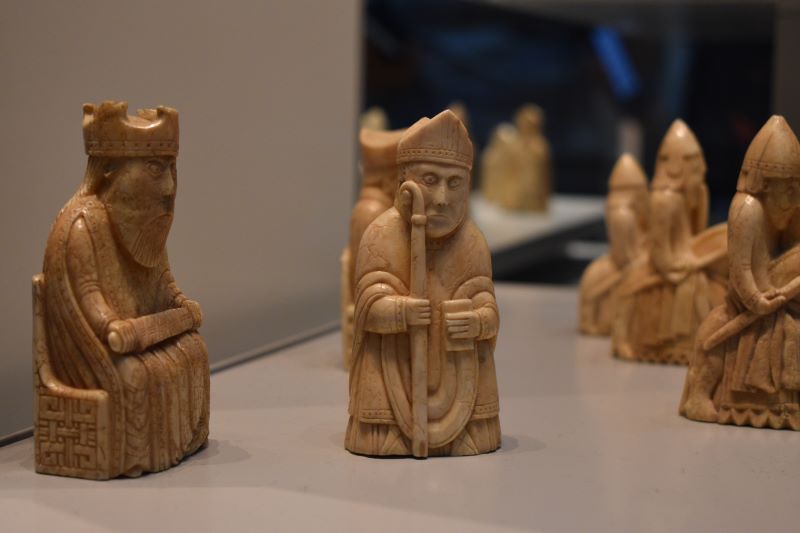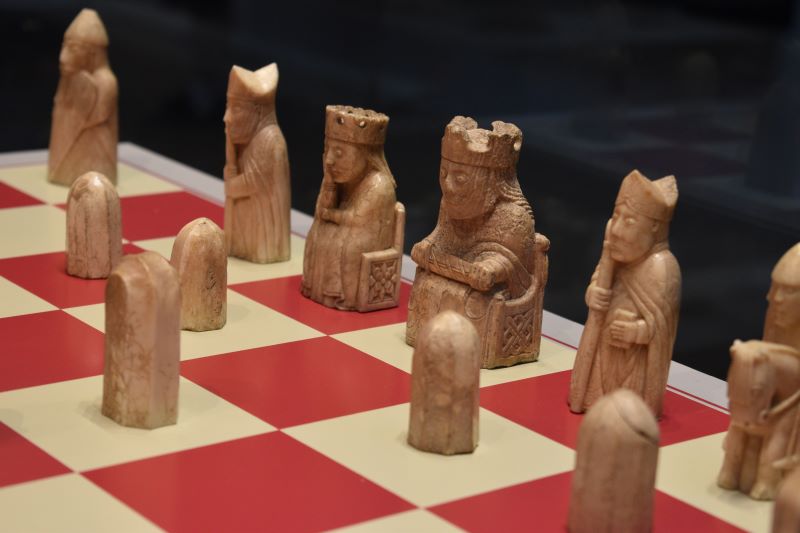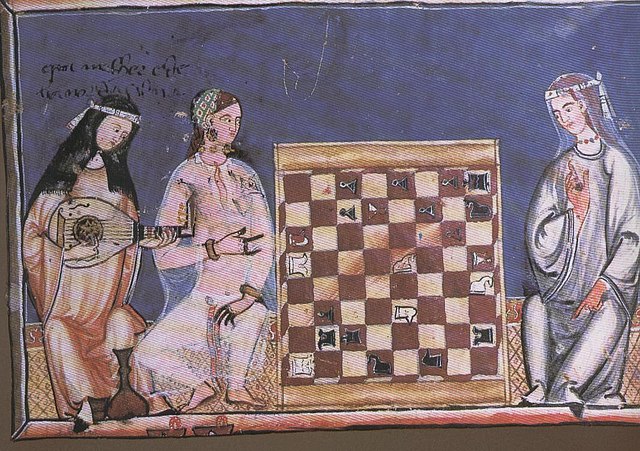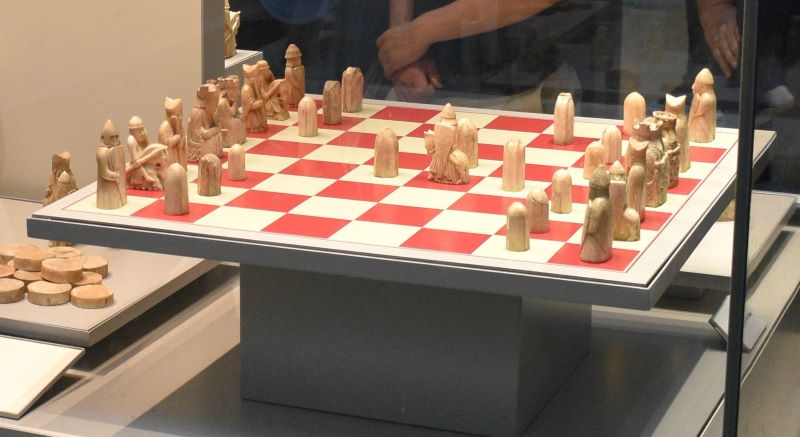The true story of this medieval chess set is unknown, but there is a legend – of course! Local lore says in the early 1800’s a Scottish farmer on the western side of the Isle of Lewis went to retrieve a wayward cow that had strayed onto the nearby beach. The cow stumbled on something buried amongst the dunes and as the farmer took a closer look, realizing it was a stone box. The farmer dug up the box and discovered what has now been labeled as “The Lewis Chessmen” for the location of the discovery of these pristine medieval chess pieces.
Museum Exhibits
In Scotland: National Museum of Scotland, Edinburgh ~OR~ Lews Castle Museum, Isle of Lewis, Outer Hebrides (off the west coast of Scotland)
In England: British Museum, London
Medieval Chess Sets Originated Centuries Earlier
By the time the Lews Chess pieces were made, the game had been around for hundreds of years. Chess is the ultimate strategic game, pitting 2 opponents against one another to capture the other’s King and win the game. The game is believed to have originated in India in the 6th century and spread into Europe by the 10th century.
The game saw a surge of popularity following the Netflix series “The Queen’s Gambit”, a popular binge-watching pleasure in 2020. I really enjoy strategy games but I’ve never been great at chess, so I really admire those who can “see” the whole game play out and pick moves with a game plan in mind!
The box found on the beach contained 78 intricately carved chess pieces. Most of the pieces are carved from walrus ivory, with some of the smaller pieces made from whale teeth.
Much of the carving detail is still visible today, but the pieces have yellowed some over the years. Originally, one set would have been painted red (as opposed to the black and white sets we’re accustomed to today). Some specks of red paint remain but much was worn off, likely from their centuries buried in the sand.
Pieces of a Medieval Chess Set
Apart from the coloring, the Lewis set would be very recognizable to a player today.
Kings & Queens sit on their thrones, the Kings with their swords and sitting slightly forward as they survey the battle raging in front of them. Queens are more pensive, with their heads in their hand as they watch the carnage unfold.
Bishops stand with their mitres and croisers and Knights sit on their horses with shields for protection.
Rooks are shown as either traditional warriors or the comical berserkers of Viking legend, biting their shields in aggressive anticipation of the fear and pain they plan to unleash.
Pawns are non-descript obelisks. They don’t last long in a game (at least not when I play) so no need to give them much personality!

Where Did They Come From?


Much like the story of their discovery, the origin story of the pieces are also up for debate.
Chess sets like this were known to be bade in Trondheim, Norway – excavation of the archbishop’s medieval palace there uncovered pieces very similar to the Lewis sets. Much of the armor, dress and weaponry of the set also match what was used in Medieval Norway.
Similar sets were also made in Iceland, so some believe the Lewis set originated there. How they made it to Scotland is anyone’s guess. The fact that there were so many suggests a tradesman was bringing goods to Scotland for trade and was either shipwrecked or attacked and forced to bury his wares.
If you ever get a chance to check out these pieces, do take a look! Each pieces is unique and has its own personality. They may look familiar – they were the inspiration for the Wizard Chess challenge in the first Harry Potter book & movie!
Post Sources:
The Isle of Lewis Chess Pieces website. Accessed 12 Sept 2021. Britannica.com chess entry. Accessed 12 Sept 2021.
This post is one of a kind (for now)! Check back later to see if I've had a new Time Travel!



